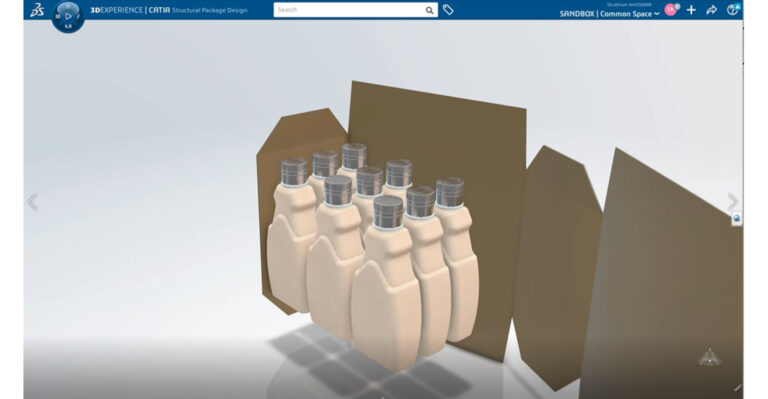
No longer a trend limited to the young, product sustainability continues to rise in importance across all demographics. Recent research from First Insight and the Wharton School of the University of Pennsylvania shows all four generational demographics (Baby Boomer, Gen X, Millennials, and Generation Z) now rank Sustainability higher than Brand Recognition as a key purchasing factor.
Research also shows consumers of all ages willing to spend more on sustainable products compared to only two years ago. These consumers would also change buying habits in support of sustainability. A Deloitte study of UK consumers says limiting or eliminating single-use plastic packaging is the most common change consumers made.
The message is clear; sustainability rose to a mainstream concern and should only get stronger. For companies selling consumer packaged goods (CPGs), developing transformative eco-friendly packaging not only earns favor from consumers, it makes good business sense.
Consider the new requirement for sustainable packaging due to the rise of ecommerce. With last-mile delivery to the home instead of a retail store, packaging must withstand “high touch” rough handling and time spent in the elements on someone’s doorstep. CPG companies and their customers want products with easily recycled, minimal packaging.
This kind of “we need a better box” thinking is required to find the innovative solutions throughout the value chain.
Here are four steps in delivering sustainable packaging:
1. Project Planning and Collaboration: Gather consumer sentiment from artificial intelligence text analytics during the concept phase. Reap step-change project efficiency improvements with a platform for data-driving project management and collaboration. A platform approach saves time and drives innovation and better decisions.
2. Material Verification: Use advanced simulation to virtually test new materials faster to meet requirements (that is, quality, performance, material biodegradability, recyclability).
3. Package Design and Qualification: Move quickly from packaging concepts to 3D designs and related mold and tooling (without prototypes) using virtual design and simulation tools. Designers apply Lifecycle Assessment (LCA) analysis to understand the environmental impact of packaging design, material choices, and manufacturing methods to make the best decisions rapidly.

Advanced simulation technology allows manufacturers to test a limitless number of packaging designs and sustainable materials for strength and usability before building expensive prototypes.
4. Integrated Product Design: Optimize team collaboration by leveraging a single business platform for development and downstream processes, such as optimizing artwork and claims management and accelerate the approvals processes. Minimize non-value-added work by reusing the same product data for future packaging projects.
The ultimate goal? Improve every aspect of the packaging supply and manufacturing chain. It all starts with design.
Virtual twins improve the package design process.
New research from Accenture shows companies using the latest technology are on track to lower costs by reducing raw material usage, as well as during product development. In addition to cost savings, the study shows applying more efficient and holistic design practices reduces CO2 emissions.
For example, companies can now apply virtual twin technology, a way to model the virtual and physical in real time, simultaneously and collaboratively. Companies use virtual twins to model, visualize, predict, and provide feedback on packaging properties and performance.
The Accenture report explains how to use virtual twins to make significant reductions in cost and emissions. Previous studies link up to 80% of design decisions to a product’s environmental impact. Virtual twins offer the ability to limit resource use and enable cross-functional collaboration throughout the enterprise, from R&D to marketing to distribution.
Sustainability by design not only improves product and packaging, but also exposes the entire organization to a product’s lifecycle footprint data. This knowledge provides the power to make more sustainable decisions such as material sourcing, manufacturing methods, and more.
CPG companies constantly create and store new data, but the challenge lies in successfully using available data to gain meaningful insight. Teams working in silos make it more difficult to collaborate and inevitably result in poorly informed decisions. Engineering team members using digital point solutions have the disadvantage of lacking exposure to the wider framework.
For example, consider a supplier producing packaging solutions for food and beverage companies all over the world. The supplier must balance key industry drivers: sustainability, time to market, and brand strength. (Customers want distinctive packaging that is also functional that best communicates their brand image.) How does the supplier deliver on all three?
Virtual twin models on one collaborative platform provide the answer. A supplier can design and simulate the best package with teams working on the same platform. They can rapidly come up with many different alternatives to share with customers in a 3D virtual environment. The customer chooses the best one for physical prototyping.
Virtual twins support reverse engineering to improve packaging designs done by a third party too. The reverse-engineering process involves measuring an object using 3D scanning technologies like CMMs, laser scanners, structured light digitizers, or industrial CT scanning (computed tomography) and then reconstructing it as a 3D model.
Through the continuous improvement of products, operations, and processes — using virtual twin technology and software — CPG companies and their suppliers can nimbly react to customer and market demand for sustainable packaging.